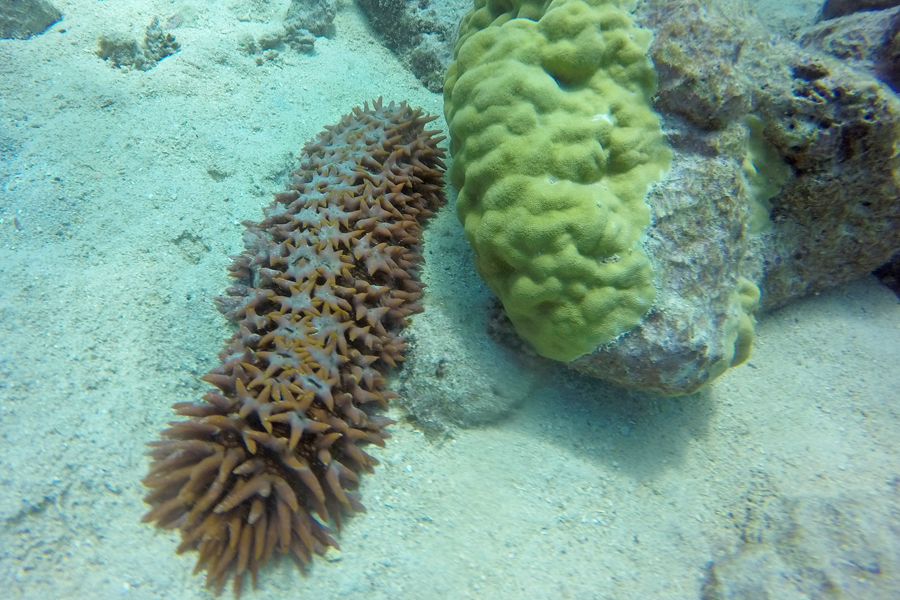Whitsunday Sea Cucumbers
Sea cucumbers are a common sighting in the Whitsundays and on the Great Barrier Reef. They are actually found all over the world and are a echinoderm, meaning that they are from the same family as star fish and sea urchins. Approximately 200 species are found in Australian waters, but there are over 1 500 species world wide.
Sea cucumbers are found on the sea floor and get their name due to their resemblance to actual cucumbers. They have a long slender bodies and filter feed through their bodies, eating decaying material from the ocean floor.
Many species of sea cucumber have a unique defence mechanism where they can shoot a sticky white liquid onto potential threats, which will hopefully immobolize them and allow the sea cucumber to live another day. Some species can push their internal organs out of their bodies to entice potential threats to eat that instead of them. The expelled organs contain a toxin called holothurin, which will poison their attacker. As they are an echinoderm, they can grow back any lost parts.
Sea cucumbers move quite slowly as they make their way around the reef. They either contract their muscles or by using tiny tube feet, much like those that starfish have, looking for food. They are most active during the night.
They are often used in food in Asian countries and were actually the first food to be exported out of Australia. Considered to be a delicacy, are are used in medicinal and traditional folk medicine. In the wild they live between 5 and 10 years and are found in almost all sea environments.
When in the Whitsundays, you will often see sea cucumbers while snorkelling or scuba diving. But as with all marine life in the Great Barrier Reef, they are best viewed from a distance and left alone to live their life, free from human interference.













